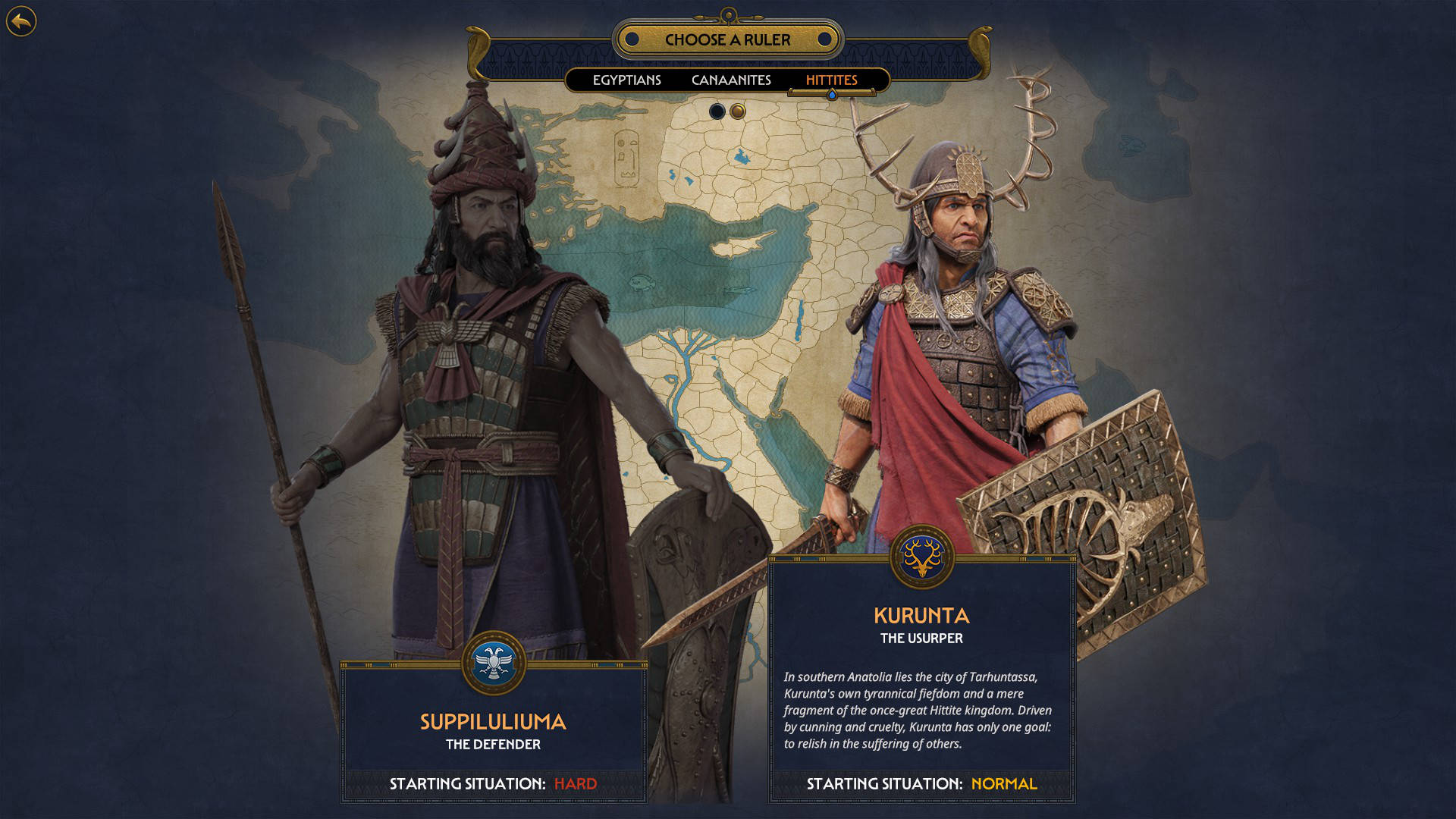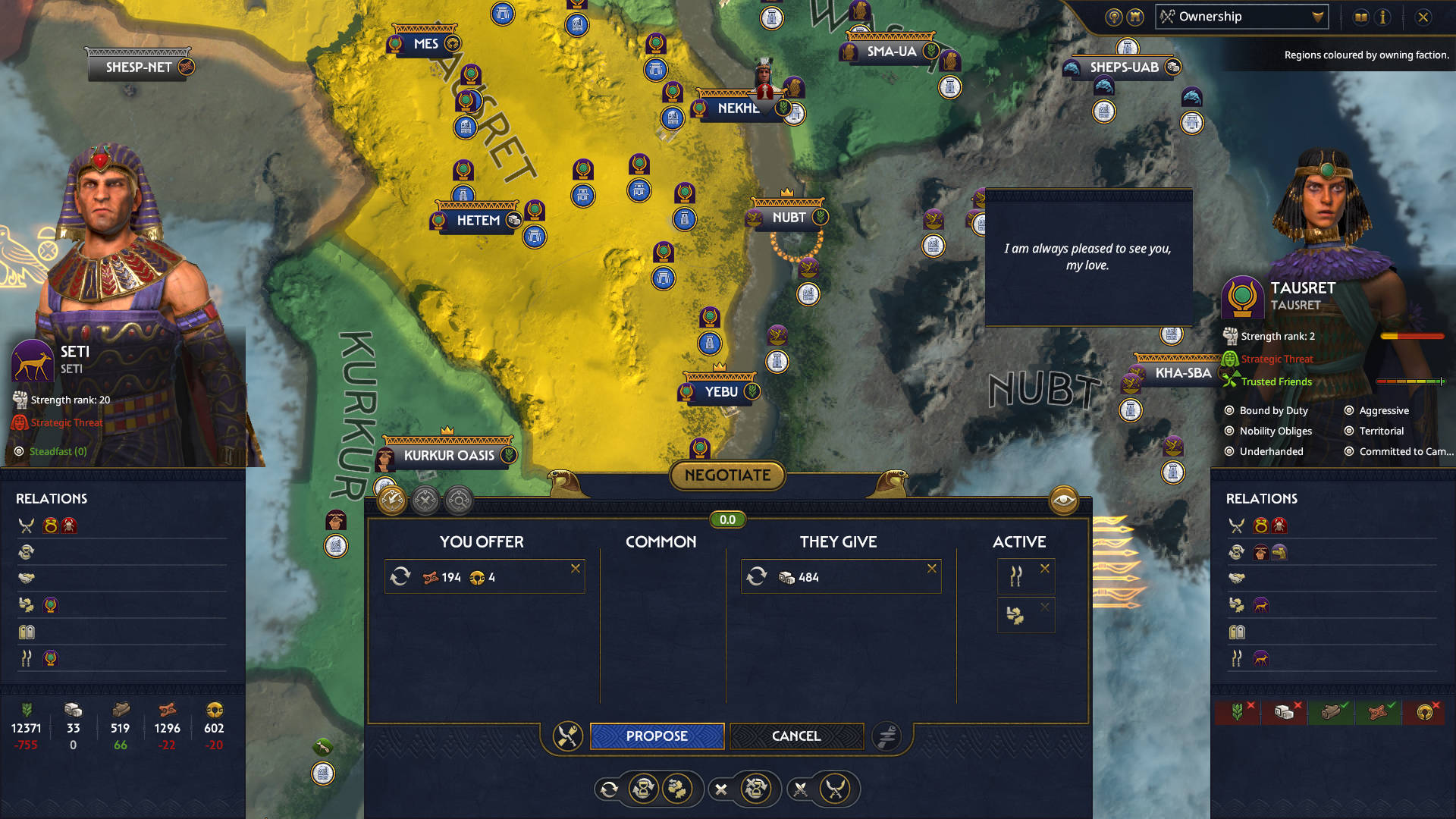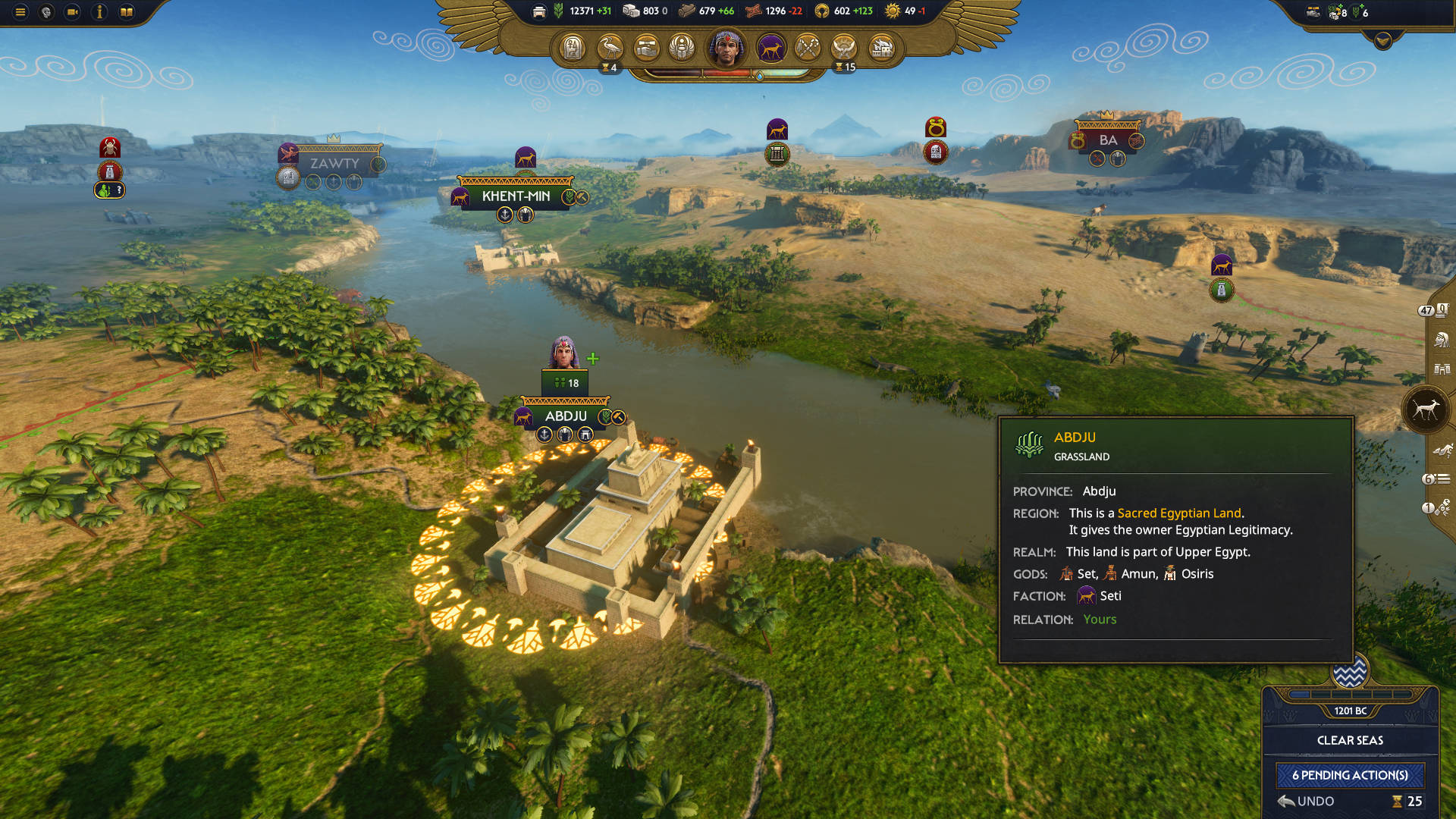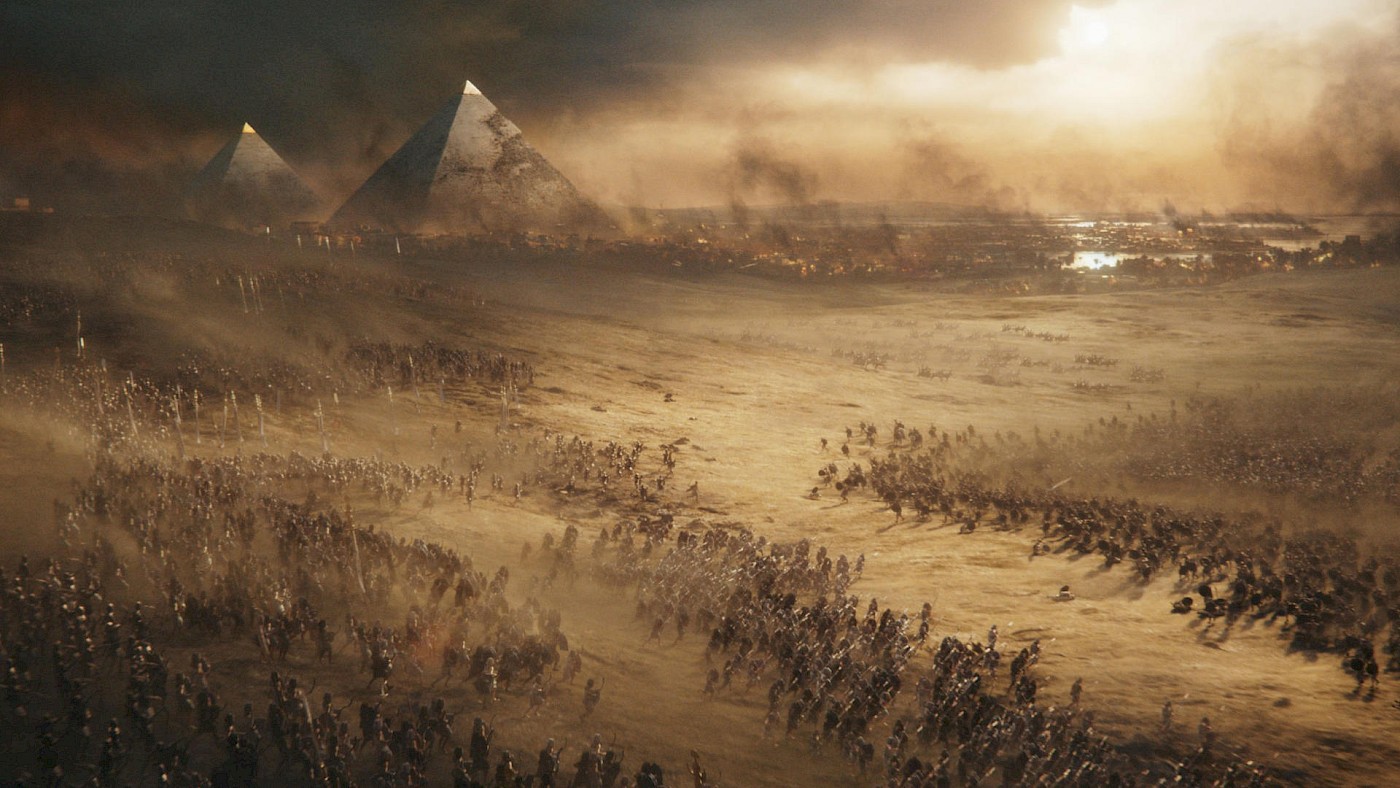Three years ago, I tried to review A Total War Saga: Troy. I bounced off the game for a variety of reasons, one of which, I thought, was that I didn’t really care about the Total War games anymore. But fast forward to the present day and I find myself playing not only the most recent entry in the series, Total War: Pharaoh, but also a few of the earlier ones that I never got round to playing: Total War: Three Kingdoms (2019) and Total War: Warhammer III (2022).
And what do you know? I’m having a great time with these three games, and especially with Warhammer III, which is probably my favourite, and arguably one of the best Total War games of the last decade or so. I guess taking a break from Total War for a while and then checking out a few games that I never got round to playing has helped reinvigorate my interest in this particular brand of strategy game.
Three Kingdoms is inspired by the classic Chinese novel Romance of the Three Kingdoms.The game’s source of inspiration is more or less fantastical and this, combined with my own relative lack of detailed knowledge of ancient China, means that I have been having a rather good time getting to grips with its various systems without being too distracted by any supposed historical inaccuracies. Ignorance is bliss, indeed.
The Total War: Warhammer games, of course, are entirely imaginary, set in the dark epic fantasy world originally created by Games Workshop. In my article on Troy, I wrote that it would have been better had Creative Assembly not attempted to do anything historical with the setting and opt for straight-up fantasy instead. I hadn’t played any of their Warhammer games before, but now that I have, I must admit that they are pretty great and definitely worth checking out. And as is the case with Three Kingdoms, I don’t have to suffer through anything that pretends to be historical. No “truth behind the legend” nonsense in these games, fortunately!
And this brings me to Total War: Pharaoh, another “historical” game in the series, with a focus on the Eastern Mediterranean seaboard in the years around 1200 BC. I haven’t played enough to do a full review. There are simply to many other games vying for my attention at present that I prefer to play instead. But I have played enough to share some of my thoughts on the game.
Expanding upon its predecessor
Pharaoh is not made by the main Creative Assembly studio in the UK, but by Creative Assembly Sofia, a smaller studio that had previously been tasked to develop some DLC for Total War: Rome 2. They were also responsible for A Total War Saga: Troy. Unsurprisingly, perhaps, Pharaoh very much feels like a continuation of Troy, and a considerable amount of assets appear to have been re-used. Compared to other mainline Total War games, like Rome 2 or the Warhammer games, Pharaoh does feel smaller in scope, but not necessarily too different from, say, the Shogun games or even Three Kingdoms.
Like Troy, Pharaoh looks wonderful, with neatly rendered landscapes, beautiful architecture, and a great overal visual design with a bold use of colours. Egypt has never looked better, especially on the campaign map, where you will spend most of your time manoeuvring, managing your cities, moving your armies, and engaging in diplomacy.
Ever since the original Rome: Total War, back when the brand name was still a subtitle, the emphasis in development has shifted more and more to the turn-based strategy half and less to the real-time battles. The reason for this is probably because there isn’t much to improve when it comes to the battles themselves. Pharaoh seeks to innovate here by featuring more dynamic weather events, like sandstorms and sweltering heat, but, by and large, the real-time battles work the same as they always have: deploy your troops in the most sensible fashion and have at it. Sieges remain as clunky as they always have been in the series.

Given the Bronze Age nature of warfare, the emphasis is on melee and ranged troops on foot, supplemented by chariots. Tactically, the game is still fairly limited, as was Troy. By and large, I find myself auto-resolving battles unless they seem to pose an interesting challenge, that is usually when the computer predicts that I would lose the engagement. More often than not, I am pretty happy to win regardless, even at a cost.
When I wrote about my thoughts on Troy, I said that I lamented the demise of the more Risk-style map from the original Shogun and Medieval: Total War, but playing through the more recent games I have come to appreciate just how good the more recent Total War games are when you consider them as primarily turn-based strategy games that happen to have a pretty refined real-time battle simulator baked in.
As with Troy, Pharaoh adds a bunch of systems to the campaign layer that you may or may not find interesting. “Legitimacy” represents how much of a claim you have to the throne. It’s points you gain or lose over the course of the game and I like the idea behind it. It ties into a new “Court Intrigue” system, which is a panel you open up every turn and select an action to raise or lower your status or those of your rivals. It’s nothing too exciting, doesn’t have much in the way of immediate effects, and may eventually become repetitive, but it does add a little flavour to the game.
And, again, as in Troy, there are deities in Pharaoh, but they work differently from the preceding game. They offer bonuses to those who worship them. The deities also have some effect on the map with the religious outposts you can build. Outposts add an additional wrinkle to the campaign map as something else to construct outside of normal settlements, and they confer a variety of bonuses, either by themselves or when you visit them with an army. I am still undecided whether they merely add busywork or are actually an interesting addition to the game.

I like the fact that you can only worship gods if you ran into any people or places where these gods are worshipped, but it makes little sense that someone from New Kingdom Egypt hasn’t heard of Horus, Anubis, or Isis. I understand that this is a game first and foremost, but the decisions that were made here strike me as odd. And why on Earth does Seti start out worshipping Set, a dark deity that was never worshipped in Egypt on account of being essentially evil incarnate?
Pharaoh keeps the resource system from A Total War Saga: Troy. It is, in fact, identical. As in the latter game, you manage five different resources: stone, food, wood, bronze, and gold. I honestly do not understand what the upside of this system is: you end up with five different currencies rather than one. While different, it doesn’t seem like an improvement over what other Total War games have.
Arguably, other games in the series have better economic systems in place. In Three Kingdoms, you have income (essentially money, from different sources like taxation, industry, and commerce) and food, as well as resources that were used for unit unlocks and trade. Warhammer III is more like older Total War games in that it doesn’t have food (folding it into bonuses or penalties to population growth), but does again feature resources that you can trade. I think these systems offer more than what Troy and Pharaoh bring to the table.
Perhaps one of the most original aspects of Pharaoh is how victory is achieved in a Total War game. Rather than work towards conquering a set number of provinces or working your way down a list of specific objectives, you now gain Victory Points, and can claim a Minor, Major, or Ultimate Victory once you have crossed the necessary thresholds. I like this a lot, since it makes winning the game a bit more flexible than it normally is.
A “historical” Total War game?
Total War: Pharaoh is another entry in the line of “historical” Total War games. And look, I realize that historical accuracy is difficult even at the best of times. As long as a game feels authentic (which is admittedly subjective), I am willing to overlook the details. Total War: Rome 2 is rife with historical inaccuracies, but it’s overall, after lots of patches and DLC, including a total overhaul of some of the game’s systems, a pretty good game that I put quite a few hours into.
I didn’t like Troy for how it botched up the Aegean Late Bronze Age. Pharaoh, I think, does a somewhat better job. Troy was a losing proposition to begin with, especially with Creative Assembly doubling down on the idea of revealing “the truth behind the legend”, and only introducing a different “mythological” mode in a later update, allowing you to play a (pseudo-)”historical” game, a purely mythological one (with monsters, called “Mythos”), or some weird hybrid between the two (“Truth Behind the Myth” – yuk). The latter is the same as the release version of Troy. If these modes had been a part of Troy from the very beginning, I might have been a lot happier with it.
In any event, Pharaoh isn’t very historically accurate, but it does feel reasonably authentic, at least to me. Right out of the gate, though, the decision was made to imagine Egypt as a kind of semi(?)-fractured country rather than a united territory as it was historically during the last stages of the New Kingdom. Because of the structure of a Total War game, this means that we start out with a world that is more fragmented at the start of the game, before the Bronze Age “Collapse”, than at the end!

When it comes to the game’s main characters, clothes and armour are basically fantastical. I don’t know what researchers they used (if any), but they need better ones for the future. Ramesses III features a particular hair style, shaved with a tuft of hair at one side, that in ancient Egypt was reserved for young boys, not adult princes. Seti wears a purple set of armour (?) that seems to have been the result of a Creative Assembly artist’s fever dream, and who knows what is going on with Tausret.
Since the game focuses on the end of the Bronze Age, naturally Creative Assembly Sofia introduces the “Sea Peoples” as a feature, despite the fact that the name is based on a mistranslation and they are unlikely to have had as much of an impact on the state of the world as is often imagined. If anything, they may have been the result of whatever disasters had befallen the kingdoms of the Late Bronze Age, rather than one of the causes – as some text in the game does admit, thankfully!
Various purported members of the “Sea Peoples” will attack Egypt over the course of the campaign, presenting an existential threat. However, in my game as Seti, they were never much of a problem because I focused on expanding my territory to the south. I actually liked this, because it shows just how limited these kinds of invasions might have been in reality. I have no doubt that these “invasions” were trouble to my rivals in the north, but I would never have known about them without the notifications I received.

Underneath the main information elements in the user interface is a small bar that folds out if you hover the mouse over it. It represents your “Civilization State”, which shifts from Prosperity to Crisis to Collapse as “Pillars of Civilization” are destroyed. The latter are key settlements on the map, “of great religious and social importance”. The more of these get destroyed, the lower your score.
It seems a little simplistic, but lest we think Creative Assembly Sofia has reduced the cause of the Bronze Age Collapse to have been only foreign invaders, there is a little more complexity added when you click to open the information panel and get an overview of events (e.g. plagues or famines and the regions affected), and a breakdown of current effects on your own faction (e.g. the tin trade being interrupted).
Closing remarks
Total War: Pharaoh is not without its problems, but overall I have been having fun with it. As a full-price game, starting at €60, I feel like it is a tad too expensive, since it doesn’t feel like a major upgrade compared to A Total War Saga: Troy. In fact, a lot of discourse online has focused on this aspect, including arguments that this, too, should have been a cheaper game in the more small-scale Saga series.
Be that as it may, this still offers a good Total War experience that looks and (mostly) plays fine, even if I don’t think it’s the best that the series has to offer. There are plenty of historical inaccuracies, especially when it comes to clothing, armour, and the deities. The choices made with regards to how the end of the Bronze Age is represented are also strictly teleological: the “Collapse” is basically unavoidable, but may ultimately not mean much when it comes to achieving victory.
So do I recommend that you check the game out? I have been having a good time with Pharaoh, but I do feel like there are so many great games out there, that it’s hard to justify playing it over, say, Warhammer III – a game with so much content that anything Pharaoh has to offer pales in comparison. There are also other new games vying for my attention, like Star Trek: Infinite, Dungeons 4, and Warhammer Age of Sigmar: Realms of Ruin, all of which I prefer to play over this right now.
Still, if any of the foregoing sounds interesting to you, remember that Steam will refund your purchase if you have less than two hours’ worth of playtime and you bought it within the last two weeks. Two hours isn’t enough to do more than scratch the surface, but if Pharaoh has managed to get its hooks into you by then, you’ll probably get your money’s worth. Otherwise, wait for a sale.
Postscript
On 14 December 2023, Creative Assembly posted a message on the Total War blog in which they apologized for making “mistakes when it comes to [their] relationship with” their players. They refer to complaints from players about the apparent lack of effort on Create Assembly’s part when it comes to their recent releases, and how representatives of the company have responded to those complaints.
In any event, as a sign of good will, the price of the base game of Total War: Pharaoh has been lowered to €40 (instead of €60). For the content offered, I feel that this price is fair. If you have any interest in the time period you should check the game out. Furthermore, the Deluxe and Dynasty Editions of Total War: Pharaoh have been removed. Owners of the game have been given partial refunds.
As the blog post notes, “There’s now only one edition of the game available for purchase.” This is, I think, as it should have been from the start.
Of course, there is a whole discussion to be had about the existence of multiple “editions” of games – a deplorable practice on the part of game publishers! – in the first place, but that is an issue better discussed elsewhere.
